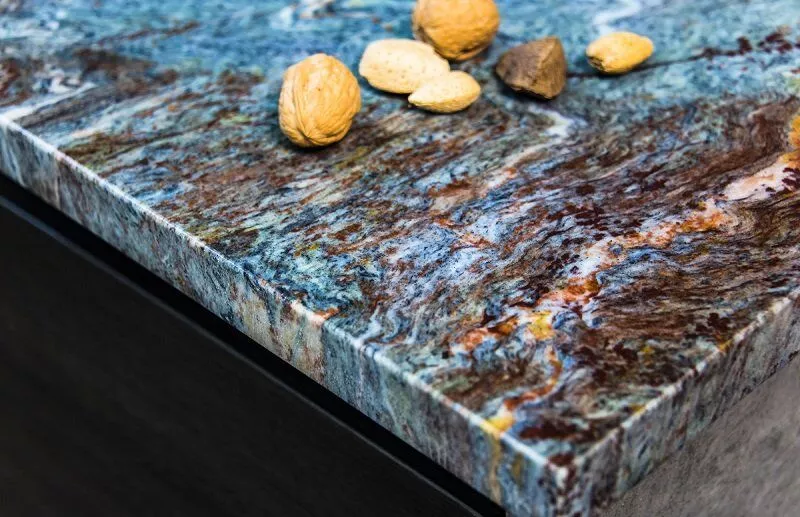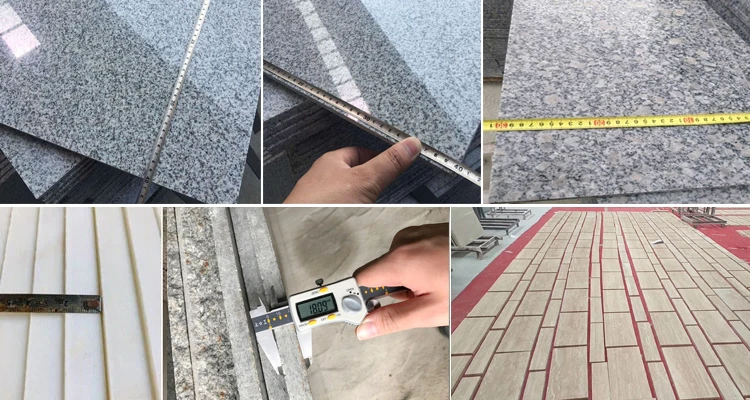When selecting granite, it’s crucial to consider both the assigned grade and the overall quality of the stone. The terms “Granite Grade” and “Granite Quality” are closely connected, yet they have different meanings. Granite grades are classifications used by the industry to differentiate levels of quality. These classifications are based on factors such as colour consistency and thickness. Granite quality covers a wide range of factors, including how it looks, how long it lasts, and how well it works for a particular purpose. Grades serve as a way to compare performance, but their overall value is subjective and takes into account personal preferences and project specifications. When it comes to selecting granite, it’s important to evaluate its grade and overall quality according to your specific requirements and expectations.

Different Grades of Granite
Granite is a natural stone that is widely used for various applications, including countertops, flooring, and decorative purposes. The quality and appearance of granite can vary based on factors such as colour, pattern, thickness, and the presence of flaws or imperfections. While there isn’t a standardised grading system for granite, the industry often uses terms to describe different grades or quality levels. Keep in mind that these terms may vary between suppliers, and it’s essential to clarify specific characteristics when purchasing granite. Here are some common terms used to describe different grades of granite:
1. Commercial Grade / Builder’s Quality
– This is typically the lowest quality of granite.
– Often used for large projects with budget constraints.
– May have more noticeable imperfections but is still functional.
– It may have more visible veins, irregular patterns, and colour variations.
– More likely to have surface pits and other imperfections.
2. Standard Grade
– This is a mid-range quality granite.
– It has a more consistent pattern and colour compared to commercial grade.
– May have fewer visible imperfections.
3. Premium Grade
– Higher quality than standard grade.
– Typically features more uniform colour, pattern, and texture.
– Fewer visible imperfections.
– Implies a high level of quality and consistency.
– Represents a high-quality stone with a consistent appearance.
4. Exotic Grade
– Refers to rare or unique varieties of granite.
– Typically more expensive due to its rarity and distinctive appearance.
READ | Granite Testing: Quality Standards, Inspection & Testing Agencies
It is worth mentioning that the terminology used to classify granite grades can vary significantly between different regions and within the industry. It is important to thoroughly examine samples, inquire about details, and gather comprehensive information about the specific qualities of the granite you are interested in before making a purchase. In addition, the grading process takes into account factors like thickness, finish, and the overall quality of fabrication. It’s important to work with a reliable supplier and inspect samples or view the slabs in person to ensure that you achieve the desired quality and appearance for your project.
Now that we have a clear understanding of granite grades and how they are both similar and different from granite quality. Here’s a helpful guide on how to check the quality of granite.
Granite Quality Check
When it comes to quality-checking granite, it’s important to carefully evaluate different factors to ensure that the stone meets all of your expectations and requirements. Discover a step-by-step guide to effectively conduct a quality check on granite:
READ: Granite Quality Check | A Comprehensive Guide

1. Appearance
-
- Colour Consistency: It is important to carefully inspect the granite to ensure that the colour is consistent across the entire slab. Look out for any notable changes or irregularities.
- Pattern Uniformity: Examine the pattern to make sure it is consistent and evenly spread out. Irregular patterns can indicate a lower level of quality.
- Veining: When examining the granite, it’s important to carefully observe the distribution and appearance of any veins or natural markings. Granite of superior quality will exhibit veins that are evenly distributed and visually appealing.
2. Surface Finish
-
- Polish Quality: Examine the polished surface to assess its smoothness and shine. A top-notch granite slab will display a glossy and reflective appearance.
- Texture: Feel the surface with your hand to check for any rough spots or irregularities. The surface should have a smooth texture.
READ | Different Granite Finishes: Which is best for you?
3. Thickness
It is important to measure the thickness of the granite slab to ensure it meets the specified requirements for your project.
READ | Granite Cutter Slabs in Different Sizes and Thickness
4. Edges
Make sure to carefully examine the edges to ensure they are smooth and straight.
READ | The Different Types of Granite Edge Profiles
5. Presence of Flaws:
Inspect the granite surface for any signs of cracks, chips, or fissures. It is important to note that while small natural pits are considered normal, larger or excessive imperfections can have an impact on both the durability and appearance.
6. Water Absorption
To conduct a basic water absorption test, you can place a few drops of water on the surface. When water is absorbed rapidly, it suggests that the granite may have a higher level of porosity, making it more susceptible to staining. Water absorption is typically resisted by high-quality granite.
7. Check for Resin Fillers
It is worth noting that certain granite slabs may contain natural pits or fissures that are filled with resin during the fabrication process. It is important to make sure that any resin fillers are done properly so that they do not impact the overall appearance.
8. Supplier Reputation
Select a supplier with a strong reputation and extensive experience. It is important to thoroughly research and evaluate suppliers before making a decision. Take the time to read reviews, ask for references, and verify that the supplier has a track record of delivering top-notch granite.
READ | Indian Granite Supplier: Finding the Best
By carefully considering these factors, you can make a well-informed choice when choosing granite for your project. It would be beneficial to collaborate with a supplier who has expertise in the field. They can assist you in choosing the right granite by offering detailed information about its unique qualities.
